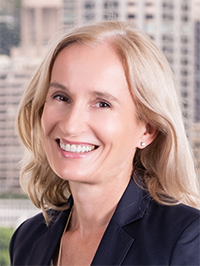SPACs and sensibility
by Jane Moir, ACGA
As Asian markets jump on the SPAC bandwagon, Hong Kong consultation reflects city’s chequered history with shell companies and stock manipulation, according to Jane Moir, ACGA Research Director.
On Friday 17 September, Hong Kong’s stock exchange released a consultation on Special Purpose Acquisition Companies (SPACs). Just five of 101 pages were dedicated to the potential benefits of blank cheque companies.
It appears ACGA is not alone in being a SPAC sceptic. The Hong Kong Exchanges and Clearing (HKEX) proposed regime would allow only elite investors for the initial SPAC IPO, while the successor company post-merger or acquisition would be treated as a new listing.
The Exchange’s approach underscores a regulatory policy over the past decade to shut the door on backdoor listings and shell activity in Hong Kong, long regarded as a flash point for stock manipulation.
HKEX’s pragmatism may not ignite investors hoping to ride the wave of the latest hot export from the US, however. The consultation lacks the swashbuckling elements of a SPAC: companies with a dubious track record will not be able to shirk regulatory vetting, promoters cannot take their cut and run, speculative pre-merger chat will be curbed.
It is SPACs without the swagger. And it speaks volumes about the rogue elements in Hong Kong’s market.
Front door rejects
A SPAC is a shell company with no operations or revenue. It raises funds via an IPO for the sole purpose of eventually using the cash to merge with or acquire another company. A deadline is usually put on this process by market regulators—typically 24 to 36 months—and if it fails to find a target company, the SPAC will be delisted.
There are obvious governance reasons why we don’t like SPACs: fundamentally, these firms merge with or buy companies who can’t make it through the front door or prefer to avoid the hassle of doing so. The usual reason given is that the firms are up-and-coming unicorns with no profitability and trading history. They lack management and ownership continuity. In other words, they won’t meet listing rule requirements. But by merging with a SPAC, these firms get expertise, cash and no regulatory vetting.
The sponsors of the SPAC usually get a 20% stake (the “promote”) via founder shares and warrants issued at a nominal consideration. They must then find a target to acquire or de-list and give shareholders their money back. There is an incentive for sponsors to push through a de-SPAC (merger/acquisition) as quickly as possible regardless of the quality of the target company—otherwise they don’t get paid.
The benefit of hindsight
HKEX’s consultation comes as SPAC investors in the US begin to sober up to frothy valuations, deals to nowhere and the prospect of tighter regulatory oversight.
While 2021 is still on course to be a bumper year, the SPAC pipeline in the US is waning. Regulators are sharpening their focus on accounting treatment and misleading statements. Mergers are failing to materialize. Market returns are sub-par. Class action litigators are circling the wagons.
Still, funds raised by SPACs in the US topped US$111 billion in the first half of 2021 compared to US$83 billion for the whole of 2020. It will be a record year for blank cheque companies—and markets in Asia have been keen to replicate the dynamic.
Hong Kong is the latest in a string of stock exchanges to look at listing empty shells: Singapore released consultation conclusions earlier this month watering down earlier proposals. It lowered the minimum market cap threshold from S$300m to S$150m and ditched plans to force SPACs to be incorporated in Singapore, a requirement which would have afforded shareholders with greater legal protection.
Indonesia meanwhile decided to allow SPACs in March, passing rules in July to allow blank cheque listings, with a particular eye on tech unicorns.
One size does not fit all
Every market has its underbelly. In Hong Kong, networks are wont to manipulate shell companies in pump and dump schemes. In 2018, the exchange consulted on new rules to curb backdoor listings given concerns about “patterns of problematic corporate behaviour of some listed companies.’’ Shell firms were being used for speculative trading, insider dealing and manipulation, leading to volatility and wild price swings. In 2019, the back door was firmly shut with the introduction of new listing rules. HKEX would have been hard pressed to justify re-opening it.
But there is also a key market characteristic of the US which is missing here. Shareholder recourse in Asia is not on a par with the US. Neither Hong Kong nor Singapore allows class action lawsuits—and taking legal action as a minority shareholder is prohibitively expensive even if you managed to clear the hurdles of derivative actions. Couple this with the fact that issuers tend to be incorporated in the Cayman Islands, and legal avenues for redress are negligible.
The investor dynamic is also different. In the US, academic research suggests that hedge funds are prolific investors in the initial IPO stage of a SPAC, cashing out at the point of merger. “A Sober Look at SPACs” by Michael Klausner, Michael Ohlrogge and Emily Ruan dubs these initial owners as the “Spac Mafia.” They get in at the outset and bail on the merged company. Potent retail appetites and the prospect of “Punter Mafia” in Hong Kong for SPACs would be a huge regulatory concern.
Concentration of shareholding is also fundamentally different in Asia, with prolific majority family ownership and cross-shareholdings. A tendency for connected transactions between not only related parties but friendly tycoons seeking to return favours might lead to a situation of SPACs for the boys in terms of finding suitable acquisition targets.
The South Korea and Malaysia experience: meh
Two Asian markets, South Korea and Malaysia, have allowed SPACs for more than a decade. The experience has been mixed. South Korea’s first SPAC listed in 2009. Since then, nearly 200 companies have joined suit, all but three issuing shares on the Kosdaq. The remaining three who listed on the Kospi failed to find acquisition targets and were delisted.
In Malaysia, five SPACs have listed since the debut of Hibiscus Petroleum in June 2011. Hibiscus and Reach Energy completed their qualifying acquisitions and the other three delisted. The SPAC landscape has been barren since 2015.
There has been little talk of the South Korea and Malaysia experience in the Asian SPAC debate yet in both cases finding suitable targets was a major issue. Arguably HKEX could be pessimistic that the SPAC IPOs of today will have much merger success, hence its proposal to treat the successor company as a new listing.
Download File Disclaimer
In addition to the ACGA website disclaimer access to the "Members' Area" of the ACGA website is subject to the general disclaimer and content attribution statements below.
General Disclaimer
By logging into our Members' Area you acknowledge that all materials displayed on the site or made available for download are for the exclusive use of ACGA members. You may not share the content with parties outside of your organisation.
Content Attribution
The copyright ownership of all material on our website belongs to ACGA. Should you wish to use any materials in the course of your corporate research, including directly quoting or paraphrasing sections, reprinting, reproducing or the like, we request that you give proper acknowledgement to ACGA and share a copy with us. Please email irina@acga-asia.org.


 Jane Moir
Jane Moir